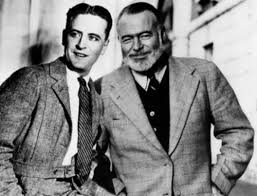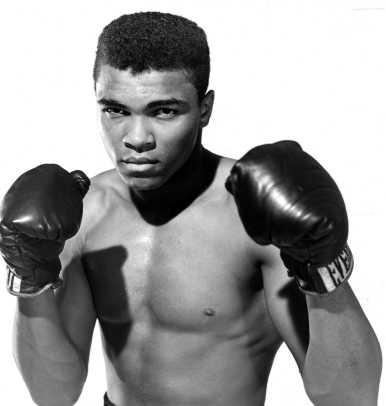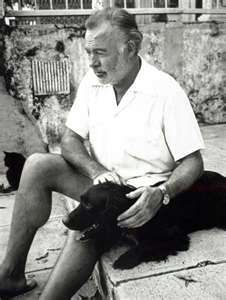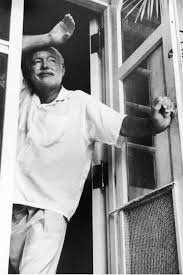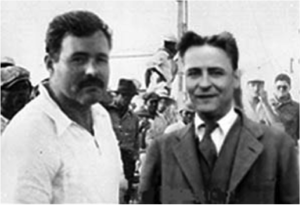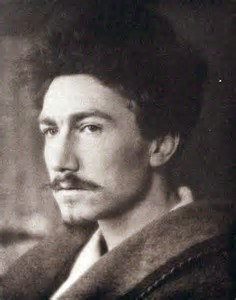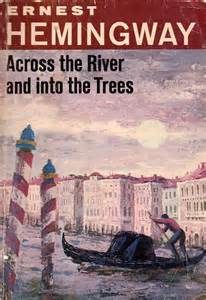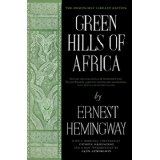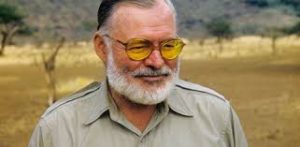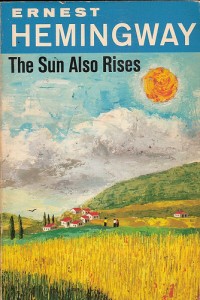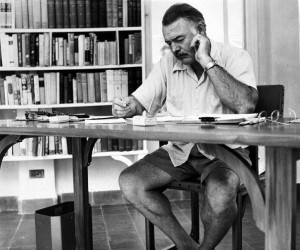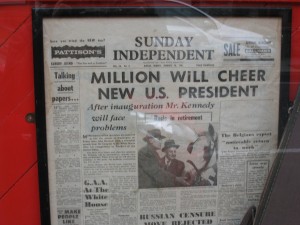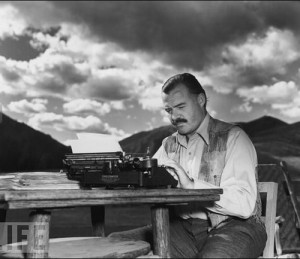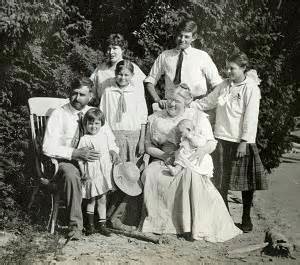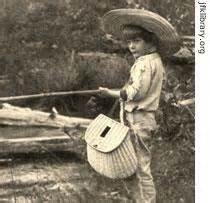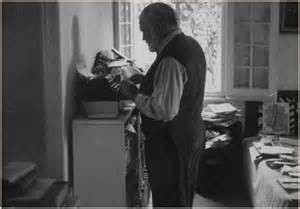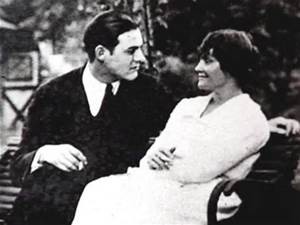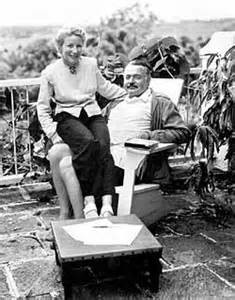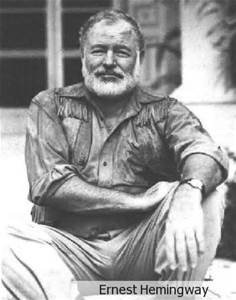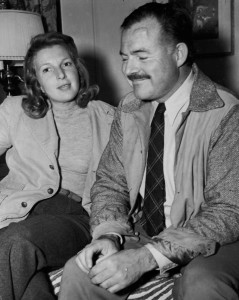Weekend Short: Ernest Hemingway’s ‘Hills Like White Elephants’
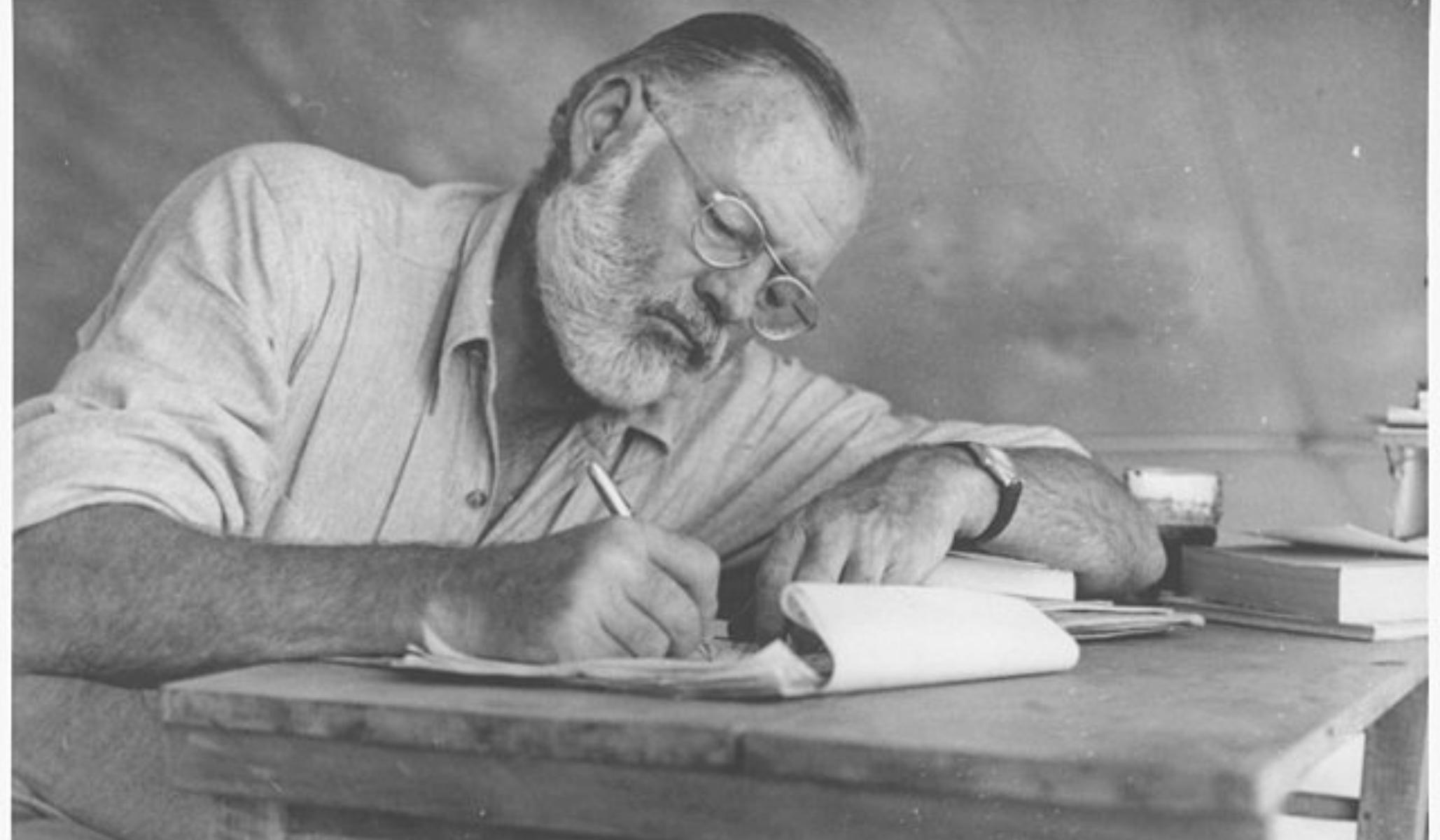
Author’s note: “Weekend Short” is a weekly profile of a short story. Additional analysis by the readership is encouraged in the comments section.
Welcome to the weekend!
The creatures of the yard are engaged in harum-scarum antics on a warm and sun-soaked morning here in central Wisconsin.
Today’s short is Ernest Hemingway’s “Hills Like White Elephants,” originally published in 1927. Set in Spain, the story portrays a couple as they struggle to make conversation around an inconvenience — an unmentioned something related to the woman. In his characteristic style, Hemingway employs script-like sparsity, as if even the narrator is uncomfortable saying too much.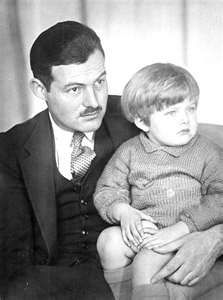
Hemingway writes:
The hills across the valley of the Ebro’ were long and white. On this side there was no shade and no trees and the station was between two lines of rails in the sun. Close against the side of the station there was the warm shadow of the building and a curtain, made of strings of bamboo beads, hung across the open door into the bar, to keep out flies. The American and the girl with him sat at a table in the shade, outside the building. It was very hot and the express from Barcelona would come in forty minutes. It stopped at this junction for two minutes and went on to Madrid.
“What should we drink?” the girl asked. She had taken off her hat and put it on the table.
“It’s pretty hot,” the man said.
“Let’s drink beer.”
“Dos cervezas,” the man said into the curtain.
“Big ones?” a woman asked from the doorway.
“Yes. Two big ones.”
The woman brought two glasses of beer and two felt pads. She put the felt pads and the beer glasses on the table and looked at the man and the girl. The girl was looking off at the line of hills. They were white in the sun and the country was brown and dry.
“They look like white elephants,” she said.
“I’ve never seen one,” the man drank his beer.
“No, you wouldn’t have.”
“I might have,” the man said. “Just because you say I wouldn’t have doesn’t prove anything.”
You can read the rest here.
The man in the story wishes the woman to have an abortion. The woman is uncomfortable about the idea but defers to the man. The man, trying to preserve his outward honor while still achieving an immoral end, uses a romanticized past to convince the woman that all will be well after the “operation.” Pauline Pfeffer
Pauline Pfeffer
The woman, playing for time and not wanting to discuss the decision, remarks that the hills “look like white elephants.” We can take that line to mean: that there’s “an elephant in the room,” that her “white elephant” is an undesired gift, or that she is unmoored and reverting to childish fictions. From the man’s response to her skepticism regarding his seeing elephants in the flesh, we can understand him to be a petty, disagreeable sort — a small man in the land of imagined pachyderms.
The man’s eventual movement from the table brings us back into the wash of humanity, as he moves through others awaiting the train — musings of destruction in the everyday. Upon his return, the woman appears to have accepted the prospect of abortion. An ugly story, but a masterful recreation of life’s many unuttered subjects which we elide in debate and through distraction.
Many thanks to Michael I. and Eric R. for suggesting Hemingway’s “Elephants.”
Author’s note: If there’s a short story you’d like to see discussed in the coming weeks, please send your suggestion to label@nationalreview.com.


